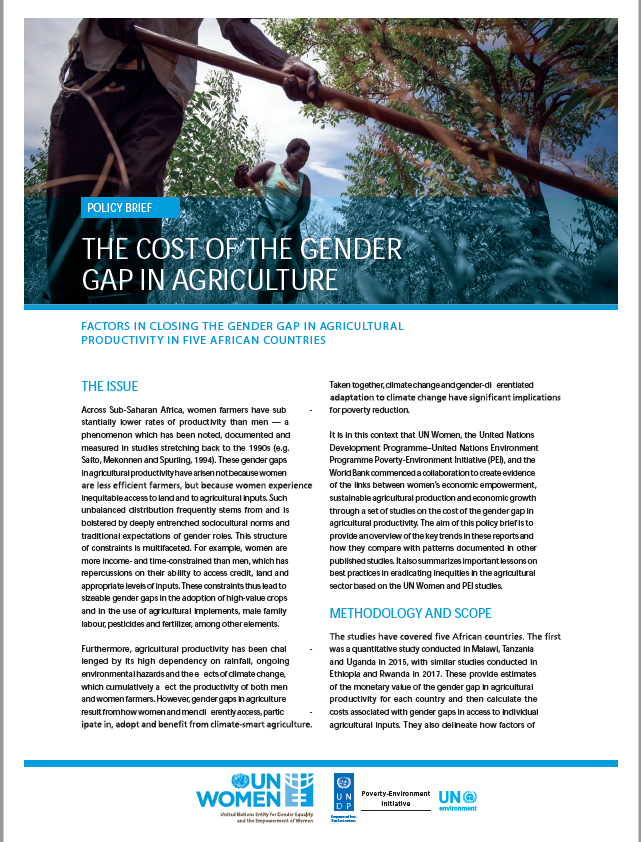
The Cost of the Gender Gap in Agriculture

Gender gaps in agricultural productivity have arisen not because women are less efficient farmers, but because women experience inequitable access to land and to agricultural inputs. Such unbalanced distribution frequently stems from and is bolstered by deeply entrenched sociocultural norms and traditional expectations of gender roles. This structure of constraints is multifaceted. For example, women are more income- and time-constrained than men, which has repercussions on their ability to access credit, land and appropriate levels of inputs. These constraints thus lead to sizeable gender gaps in the adoption of high-value crops and in the use of agricultural implements, male family labour, pesticides and fertilizer, among other elements. Furthermore, agricultural productivity has been challenged by its high dependency on rainfall, ongoing environmental hazards and the effects of climate change, which cumulatively affect the productivity of both men and women farmers. However, gender gaps in agriculture result from how women and men differently access, participate in, adopt and benefit from climate-smart agriculture.